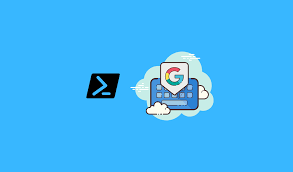Employee engagement has become a key factor in driving organizational success, productivity, and employee retention in today’s competitive business environment. As organizations strive to enhance workforce performance, strategic HR management plays a crucial role in creating the right conditions for employees to thrive. In this case study, we explore how Kryoverse Innovations, a technology company specializing in AI and cloud solutions, successfully used strategic HR management to improve employee engagement. We will also examine how their implementation of a hr management case study contributed to their HR management success.
Background: Kryoverse Innovations
Kryoverse Innovations is a forward-thinking technology firm that has grown rapidly over the last decade. The company’s expertise in artificial intelligence, cloud computing, and SaaS solutions has attracted top talent from around the world. However, as the company expanded, it faced new challenges in maintaining high levels of employee engagement and addressing growing concerns about work-life balance, professional development, and employee satisfaction.
In 2022, the company’s HR department noted a decline in employee engagement, with surveys indicating that employees felt disconnected from their work and lacked opportunities for growth. This led to reduced productivity and higher turnover rates. The company's leadership realized that a strategic approach to HR management was needed to address these issues.
The HR Challenge: Low Employee Engagement
Employee engagement at Kryoverse Innovations was impacted by several factors:
-
Limited career growth opportunities: Employees expressed concerns about the lack of clear career progression pathways, which led to disengagement.
-
Work-life balance: As the company scaled rapidly, the demands on employees increased, leading to stress and burnout.
-
Lack of employee recognition: Many employees felt their hard work was not adequately recognized or rewarded, contributing to low morale.
-
Skill development gaps: Employees, particularly in technical roles, wanted more opportunities for learning and development, but the company lacked a formal structure to support continuous professional growth.
To address these concerns, Kryoverse Innovations decided to take a holistic approach to enhancing employee engagement through strategic HR management, with a strong focus on professional development and recognition programs.
HR Strategy: A Holistic Approach
To improve employee engagement, Kryoverse Innovations developed a comprehensive strategy focused on four key areas:
-
Learning and Development: The HR team recognized the importance of providing employees with opportunities to upskill and reskill. To facilitate this, they implemented a Case Study On Learning Management System (LMS), which enabled employees to access training resources, certifications, and development programs.
-
Career Progression and Internal Mobility: The company introduced clear career pathways and opportunities for internal promotions. Employees were provided with individual development plans aligned with both their career aspirations and the company’s goals.
-
Recognition and Rewards Programs: To foster a culture of recognition, Kryoverse Innovations launched a new program where managers could publicly acknowledge employee achievements. This was coupled with tangible rewards, such as bonuses and extra paid time off.
-
Work-Life Balance Initiatives: The HR team introduced flexible work schedules, remote work options, and wellness programs to reduce burnout and improve overall employee well-being.
By addressing these areas, the company aimed to create a more supportive, engaging work environment where employees felt valued and motivated to contribute to the company’s success.
The Role of the Learning Management System (LMS)
The implementation of the Learning Management System (LMS) was one of the most critical aspects of Kryoverse Innovations’ strategy to enhance employee engagement. Before the LMS, employees struggled to access the training and development resources they needed to grow professionally. The introduction of the LMS streamlined the learning process and offered the following benefits:
